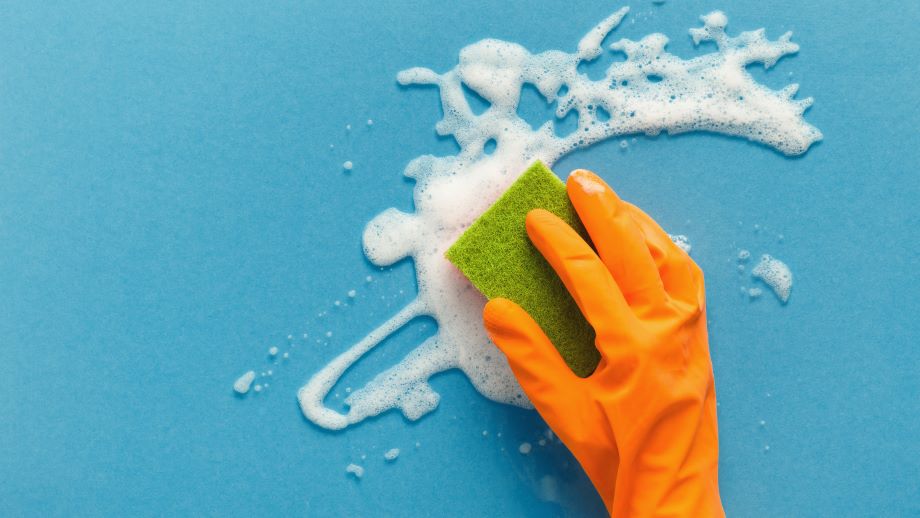Carbon Sponge Sops Up CO2 From Air
Carbon Sponge Sops Up CO2 From Air


Industry is looking for a way to wipe away its carbon emissions. Researchers at Cornell believe they’ve found a cheap and easy method.
Carbon capture is a technology seen as a linchpin for keeping atmospheric carbon dioxide (CO2) at tolerable levels. Researchers the world over are working on doing just that, but the technology deemed most promising—amine-based scrubbers—has some fundamental limitations: They’re expensive, and they break down too quickly.
“For direct air capture, they’re not particularly air stable,” said Phillip Milner, a professor of chemistry and chemical biology at Cornell University in Ithaca, N.Y. “They tend to degrade over time with the presences of oxygen.”
But now Milner, working with a team of international collaborators, has created a robust sponge that can collect CO2 and then shed it on demand, over and over again, without breaking down. The trick is forcing hydroxide ions into the sponge.
Hydroxide ions bond with CO2 to make bicarbonates. “Kind of the reverse of when you use baking soda and it fizzes,” Milner said.
That bonding is where the potential to collect CO2 from the air comes from. But hydroxide ions also react with many other materials as well—typically decomposing whatever porous solid they might be put in to. Carbon, though, is inert stuff, so Milner and his colleagues decided to try to load a carbon sponge with hydroxides.
“In addition to being cheap—which is what everybody is excited about—they also are very stable,” he said.
But the very quality that makes a carbon sponge stable—its inertness—also makes it difficult for the hydroxides to stick. Milner and his team tried loading hydroxides mechanically into the sponge and found they wouldn’t stay put. So they borrowed a trick from the world of super capacitors.
“The battery world has studied how to put hydroxides into carbons for a long time, to make water-based batteries or super capacitors,” Milner said. “We just took advantage of that to do a totally different application.” By charging the carbon cloth, the hydroxide ions stay nestled in the pores.
When CO2 in the air flows through the cloth, the negatively charged hydroxide ions bind to it and form negatively charged bicarbonates. Removing the CO2 is then a simple matter of vacuuming off the baking soda or heating it up. Milner and his team did it by running a current into the cloth. “You just thermally break the bicarbonate back into CO2, carbon dioxide and hydroxide,” he said. “So that’s your cycle: you capture CO2 at low temperatures, and you release the CO2 under vacuum with heating. So it stays charged the entire time.”
The hydroxide-charged carbon sponge becomes saturated with CO2 in a matter of minutes, compared to the days it takes to saturate many previous efforts, so the carbon can be cycled off many times an hour. “We’re not limited by chemistry,” said Milner, “we’re limited by, essentially, engineering.”
 That engineering could result in a fibrous filter similar to other carbon-capture methods. And it is likely to move away from the cloth that was just a proof of concept for the lab. Before they lock in a design, though, the researchers have to solve two big questions. First, they want to figure out how to increase hydroxide content to increase capacity. And they need to further understand the role of water, which can inhibit carbon capture in humid environment.
That engineering could result in a fibrous filter similar to other carbon-capture methods. And it is likely to move away from the cloth that was just a proof of concept for the lab. Before they lock in a design, though, the researchers have to solve two big questions. First, they want to figure out how to increase hydroxide content to increase capacity. And they need to further understand the role of water, which can inhibit carbon capture in humid environment.
They also have to determine where their filter would work best—hanging out in the general atmosphere or as point source capture at power plants and factories. Usually, it’s hard to test new systems for point source capture, as private enterprises don’t want their emissions messed with. But Milner is a founder of the Cornell Advanced Platform for Testing, Utilization, and Research, a one-of-a-kind facility to open the on-campus natural gas power plant for just such efforts. While researchers around the world are eager to field test their own lab bench-proven systems, Milner’s filter will likely be one of the first.
After testing their system on the real thing, it may soon be ready to help scrub our air of CO2.
Michael Abrams is a technology writer in Westfield, N.J.
“For direct air capture, they’re not particularly air stable,” said Phillip Milner, a professor of chemistry and chemical biology at Cornell University in Ithaca, N.Y. “They tend to degrade over time with the presences of oxygen.”
But now Milner, working with a team of international collaborators, has created a robust sponge that can collect CO2 and then shed it on demand, over and over again, without breaking down. The trick is forcing hydroxide ions into the sponge.
Hydroxide ions bond with CO2 to make bicarbonates. “Kind of the reverse of when you use baking soda and it fizzes,” Milner said.
That bonding is where the potential to collect CO2 from the air comes from. But hydroxide ions also react with many other materials as well—typically decomposing whatever porous solid they might be put in to. Carbon, though, is inert stuff, so Milner and his colleagues decided to try to load a carbon sponge with hydroxides.
“In addition to being cheap—which is what everybody is excited about—they also are very stable,” he said.
But the very quality that makes a carbon sponge stable—its inertness—also makes it difficult for the hydroxides to stick. Milner and his team tried loading hydroxides mechanically into the sponge and found they wouldn’t stay put. So they borrowed a trick from the world of super capacitors.
“The battery world has studied how to put hydroxides into carbons for a long time, to make water-based batteries or super capacitors,” Milner said. “We just took advantage of that to do a totally different application.” By charging the carbon cloth, the hydroxide ions stay nestled in the pores.
When CO2 in the air flows through the cloth, the negatively charged hydroxide ions bind to it and form negatively charged bicarbonates. Removing the CO2 is then a simple matter of vacuuming off the baking soda or heating it up. Milner and his team did it by running a current into the cloth. “You just thermally break the bicarbonate back into CO2, carbon dioxide and hydroxide,” he said. “So that’s your cycle: you capture CO2 at low temperatures, and you release the CO2 under vacuum with heating. So it stays charged the entire time.”
The hydroxide-charged carbon sponge becomes saturated with CO2 in a matter of minutes, compared to the days it takes to saturate many previous efforts, so the carbon can be cycled off many times an hour. “We’re not limited by chemistry,” said Milner, “we’re limited by, essentially, engineering.”

ASME's Climate Commitment
ASME leverages the power of engineering to benefit humanity. Today, it is building consensus around technical, science-based climate solutions.
They also have to determine where their filter would work best—hanging out in the general atmosphere or as point source capture at power plants and factories. Usually, it’s hard to test new systems for point source capture, as private enterprises don’t want their emissions messed with. But Milner is a founder of the Cornell Advanced Platform for Testing, Utilization, and Research, a one-of-a-kind facility to open the on-campus natural gas power plant for just such efforts. While researchers around the world are eager to field test their own lab bench-proven systems, Milner’s filter will likely be one of the first.
After testing their system on the real thing, it may soon be ready to help scrub our air of CO2.
Michael Abrams is a technology writer in Westfield, N.J.



